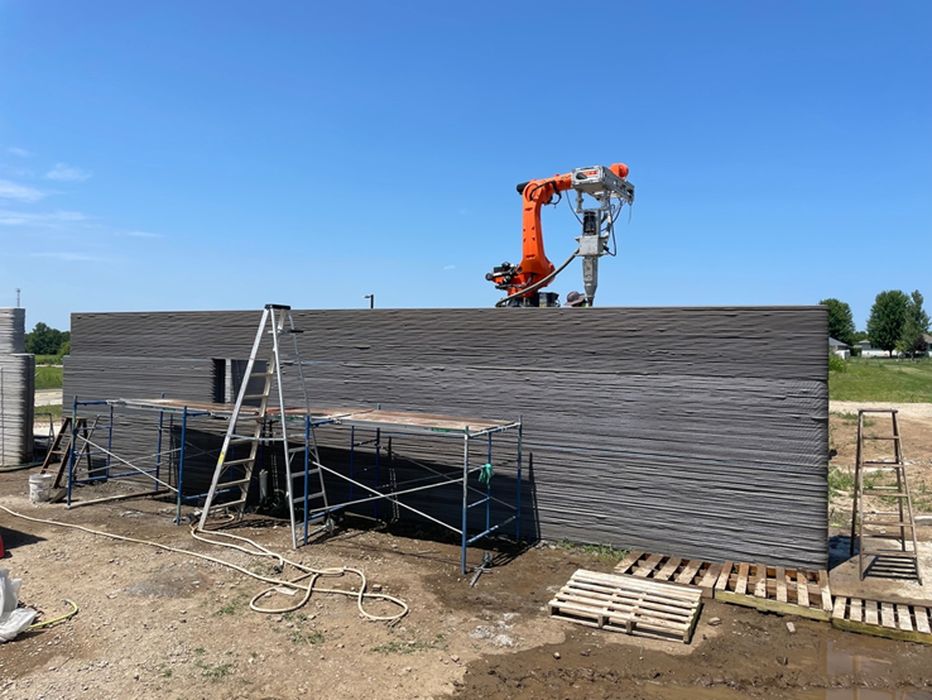
Charles R. Goulding and Christopher Lee speak with RIC Technology founder Ziyou Xu about the company’s latest developments in construction 3D printing.
We recently had the opportunity to interview Ziyou Xu from RIC Technology, who provided valuable insights into their pioneering work in 3D printing for residential construction. During our in-depth conversation, Xu delved into the technical specifics of RIC’s 3D printing methods and the transformative impact these innovations are having on the construction industry.
The discussion covered a range of topics, including the challenges of reducing construction costs, the benefits of design flexibility offered by 3D printing, and the integration of this technology into conventional building practices. Xu also highlighted the importance of addressing building codes, market acceptance, and workforce training in the adoption of 3D printing in construction. This interview offers a comprehensive look into how RIC Technology’s advancements are shaping the future of affordable housing.
Leadership and Vision: Ziyou Xu’s Influence
Ziyou Xu, the leader at RIC Technology, has a professional background that spans architecture and software development. His expertise in parametric design, a discipline that combines architectural principles with software skills, began during his high school years when he started learning various software tools and developing parametric designs on his own.

Xu’s academic pursuits included enrollment at Columbia University, but he opted to leave the academic path to apply his skills directly in the industry, reflecting a shift towards a more entrepreneurial and practical approach. His foundational skills in architecture, enhanced by a robust understanding of software, have been critical in shaping his vision for RIC Technology.
At RIC Technology, Xu’s responsibilities involve the application of his architectural and software knowledge to the field of 3D printing in construction. This includes developing strategies and techniques that utilize his dual expertise to innovate in the construction sector, particularly focusing on the implementation of 3D printing technologies in building processes. His role is central to guiding the company in exploring and adopting new technologies. “My experience in architecture and software enables us to push 3D construction boundaries,” Xu said. Xu’s leadership combines design sensibility with technological innovation, crucial for RIC’s success.
The ADU Strategy: Rethinking Urban Housing
Ziyou Xu of RIC Technology detailed their venture into Accessory Dwelling Units (ADUs) in urban spaces, particularly in California. This initiative explores a novel solution to urban housing shortages by integrating new housing into existing residential homes. “Our ADU strategy is about complementing existing urban housing in a sustainable manner,” Xu commented.
The appeal of ADUs lies in their cost-effectiveness and adaptability to urban environments. According to Karen Chapple, director of the School of Cities at the University of Toronto, ADUs tend to cost half as much to build as a single-family home and often rent for below-market rates, making them a source of naturally occurring affordable housing. In expensive or desirable areas, they provide affordable options for workers who might otherwise be priced out. Policy changes, especially in California, have spurred ADU development. Since 2017, these changes have led to ADUs comprising approximately 11% of all residential building permits in California as of early 2022. Cities like Seattle and Arlington, Virginia, have also updated their policies to encourage more ADU production.
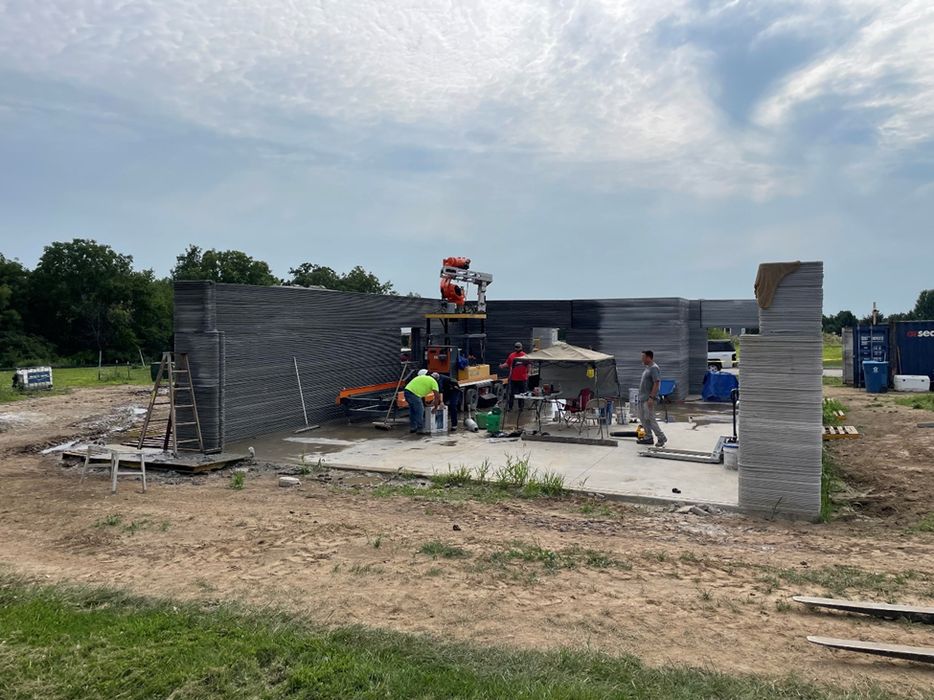
RIC’s approach, utilizing 3D printing for ADU construction, complies with local building codes, garnering initial positive feedback from city authorities. This model’s adaptability in various urban settings worldwide presents a fascinating case for urban development and planning. However, financing ADUs remains a challenge. Traditional mortgage products, like cash-out refinancing, home equity loans, and renovation financing, often fall short for ADU projects as they don’t consider the potential rental income from ADUs or their after-repair market value. Innovative financing solutions are needed to fully harness the potential of ADUs in addressing urban housing shortages. Entities like Fannie Mae and Freddie Mac could play a crucial role by adapting their underwriting decisions to consider potential rental income from ADUs.
The success of RIC’s ADU initiative could offer a blueprint for addressing urban housing challenges globally. With the integration of modern construction techniques and the support of policy changes and financial innovations, ADUs have the potential to significantly alleviate urban housing shortages, offering a sustainable and efficient solution around the world.
Robotic Arm Technology: Innovating Construction Practices
RIC’s shift to using a robotic arm, as opposed to traditional gantry systems, marks a notable innovation in 3D construction. By introducing models like RIC1, RIC-M1, and RIC-M1 Pro, a new release in January 2024, RIC sets a new standard for maximum printing dimensions and speed in the industry. “The robotic arm’s adaptability is key in navigating the unique challenges of urban construction,” Xu explained. This technological adaptation has the potential to significantly enhance construction efficiency and flexibility.
The advanced robotic arm-based 3D printing system employed by RIC Technology offers several unique advantages over conventional gantry-based systems. Notably, it reduces construction costs by about USD$16,000 per home, making it a promising solution to address the global housing shortage crisis. The compact and retractable design of the robotic arm system makes it easy to transport and quick to set up, operational within 2-4 hours, as opposed to the lengthy setup time for gantry systems. This efficiency in setup and operation significantly lowers labor and transportation costs. Additionally, 3D-printed houses built using this technology are not only cost-effective but also boast energy savings of up to 30% and resilience to extreme weather conditions and natural disasters, like the harsh winters in Iowa.
Furthermore, RIC Technology’s innovative approach intertwines advanced robotics, artificial intelligence, high-performance materials, and parametric design. This integration not only drastically increases productivity and reduces labor dependency but also allows for more creative and structurally sound architectural designs. Projects like the world’s longest 3D-printed concrete pedestrian bridge completed in Shanghai, and various other large-scale constructions, highlight the practical and aesthetic capabilities of this technology. RIC Technology’s commitment to revolutionizing the construction-design industry is evident in its various projects and awards, including the Rapid Construction System for Concrete Houses designed for low-income families in Africa.
The effectiveness and adaptability of this robotic technology in varying construction environments are crucial for its success. The construction industry is keenly observing the long-term performance of this technology, especially its potential to provide tangible improvements over conventional construction methods.
Affordability in 3D Printed Homes
RIC’s strategy to make 3D printed homes more affordable is a key aspect of their approach. “We are working to make 3D printed homes an economically viable option for a wider range of customers,” Xu stated. This approach might significantly impact the housing market, potentially transforming 3D printed homes from a niche market to a mainstream housing solution.
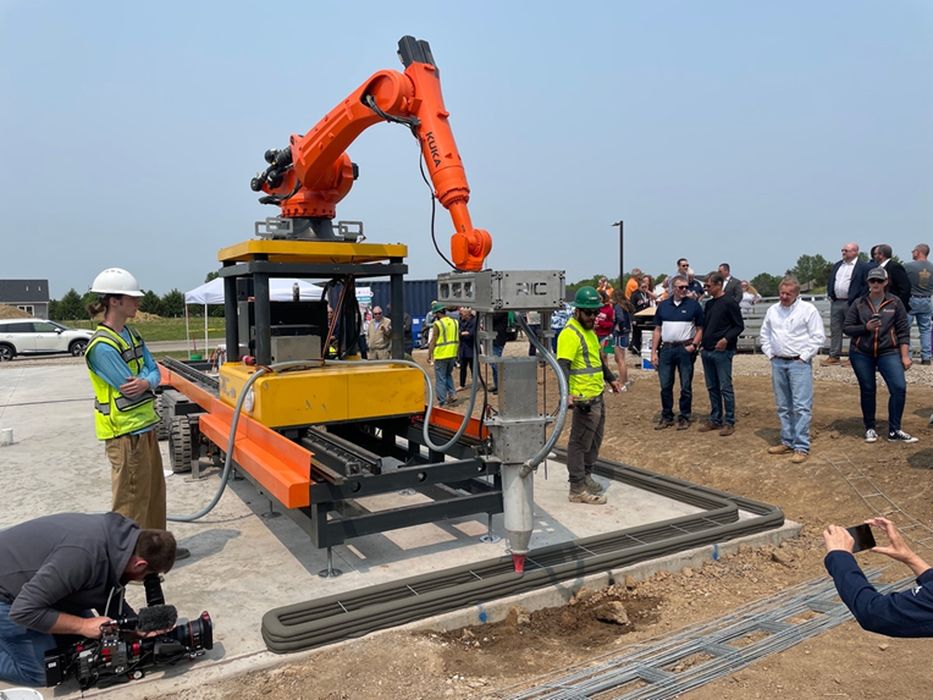
In their efforts to revolutionize residential construction, RIC has focused on making 3D printing more accessible and economical. Ziyou Xu highlighted the economic challenges in using traditional large-scale 3D printers for residential construction, stating, “The big machines range from USD$800k to USD$1.2 million, and with that, your use of the machine is over a thousand dollars per day. We’re doing residential houses, not high-end commercial projects, so there needs to be a cap on daily usage costs.” Recognizing these cost barriers, RIC has developed a more affordable system, aiming to lower daily usage expenses and make the technology feasible for residential projects. Their innovative design also allows for rapid assembly and disassembly, addressing the challenges of printing in constrained urban spaces like backyards. Furthermore, by engaging the upcoming workforce in construction through technology, RIC addresses labor challenges in the industry, as Xu notes, “We have a training program… young people don’t want to work in construction because it’s dirty, tiring, and dangerous, but they do want to play with the big robot.”
The scalability of this cost-effective approach in the dynamic construction market is a key factor. Additionally, market acceptance of 3D printed homes will play a crucial role in determining the success of this technology in the residential sector. However, challenges such as the lack of building codes and regulations, high initial costs, and limited adoption of the technology in the construction industry are still barriers to its widespread use. Despite these challenges, the potential of 3D-printed homes to revolutionize the affordable housing market remains significant.
Sustainable Building Practices
RIC Technology’s commitment to environmentally friendly construction methods is exemplified in its exploration of green cement, aligning with global trends towards sustainable building practices. Ziyou Xu of RIC Technology has emphasized this commitment, stating, “One of the projects we’re working on are printing with green cement.” This focus on using sustainable materials like green cement is part of RIC’s broader initiative to minimize environmental impact in the construction industry.
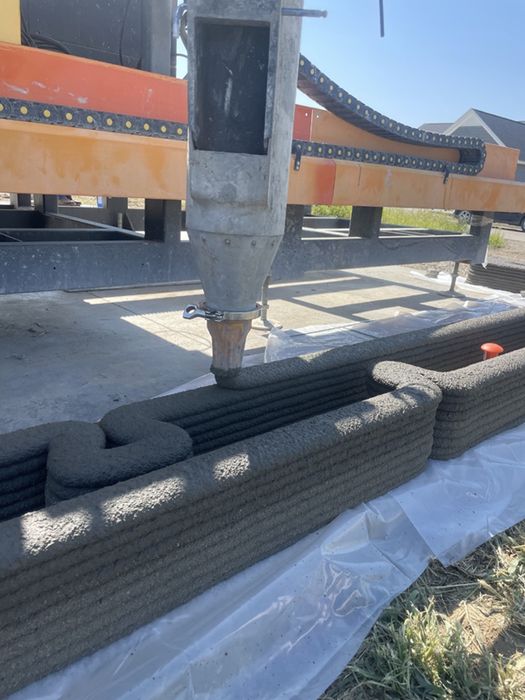
Green cement, recognized for its low carbon footprint, is a key element in RIC’s approach to sustainable building. Xu notes the challenges associated with this material, acknowledging that “it’s still a challenging material to work with.” Despite these challenges, RIC’s dedication to integrating green cement into their projects demonstrates their focus on balancing environmental concerns with innovation in construction techniques.
This commitment to sustainability is crucial in the context of the construction industry, which is increasingly looking for practical, cost-effective solutions that also address environmental issues. RIC’s exploration and application of green cement in large-scale construction projects represent an ongoing effort to develop more sustainable building practices.
Pioneering Innovations: The Rise of 3D Printing in Construction
Construction is undergoing a major transformation with the introduction of 3D printing technology. This development is more than just an improvement; it represents a significant change in how buildings and structures are designed and built. 3D printing offers new possibilities in construction, potentially changing the industry with greater efficiency, more design options, and enhanced sustainability. The technology enables the creation of complex architectural features and complete buildings, marking a new phase in construction capabilities.
- Public Infrastructure Projects: Utilizing 3D printing for durable and intricate designs in bridges and overpasses, reducing time and costs.
- Landscaping and Outdoor Structures: Crafting unique elements like gazebos and park benches, enhancing aesthetic appeal and functionality.
- Historical Restoration and Preservation: Accurately reproducing architectural details for historical buildings, crucial in preserving cultural heritage.
- Modular and Portable Buildings: Quick assembly and disassembly for events, temporary offices, or emergency facilities, offering flexibility and mobility.
- Underground Construction: Potential solutions for utilities and transportation tunnels, simplifying complex underground structures.
- Sound Barriers and Acoustic Structures: Building structures with specific acoustic properties for highways, concert halls, or studios.
- Off-Grid Living Solutions: Eco-friendly cabins or tiny homes with sustainable materials, suitable for remote or rural areas.
- Marine Structures: Piers, floating platforms, and underwater habitats, opening new possibilities in marine architecture.
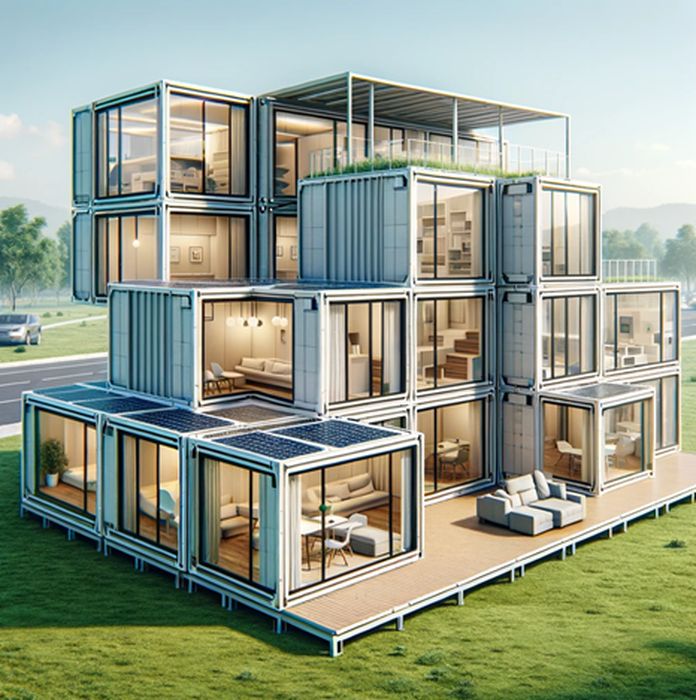
Future Directions: RIC Technology’s Impact on Construction
RIC Technology’s progress in 3D printing and sustainable practices marks a potential shift in construction methodologies. Led by Ziyou Xu, RIC’s participation in constructing urban accessory dwelling units (ADUs) and the use of green cement reflects a response to current environmental and urban housing challenges. These initiatives demonstrate RIC’s efforts to integrate advanced technology into practical construction solutions while considering environmental sustainability.
The effectiveness and wider adoption of RIC’s technologies in the construction industry remain areas of keen interest. The scalability and adaptability of these methods, particularly in urban settings, will be key indicators of their potential long-term impact. RIC’s approach, blending innovation with sustainability, represents an evolving dynamic in construction, aiming to balance efficiency with environmental responsibility.
